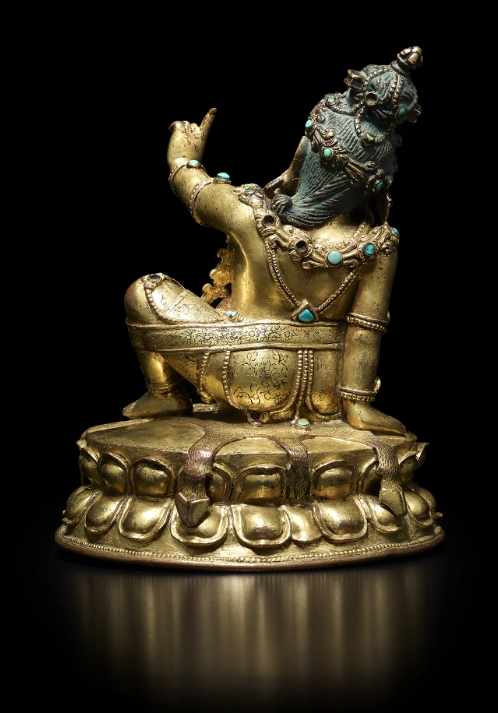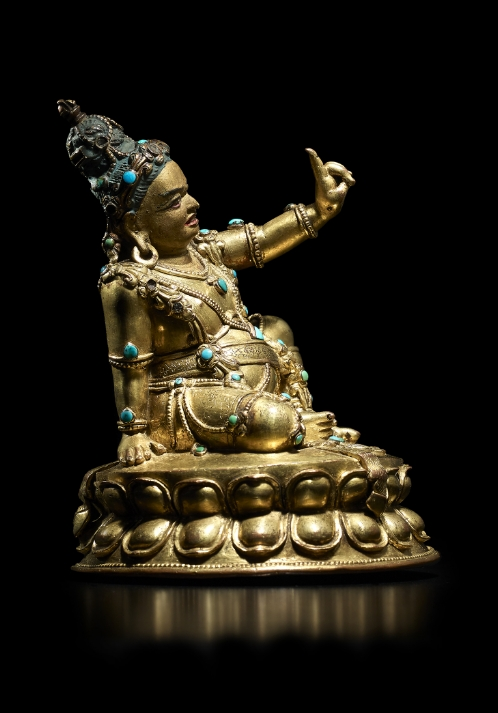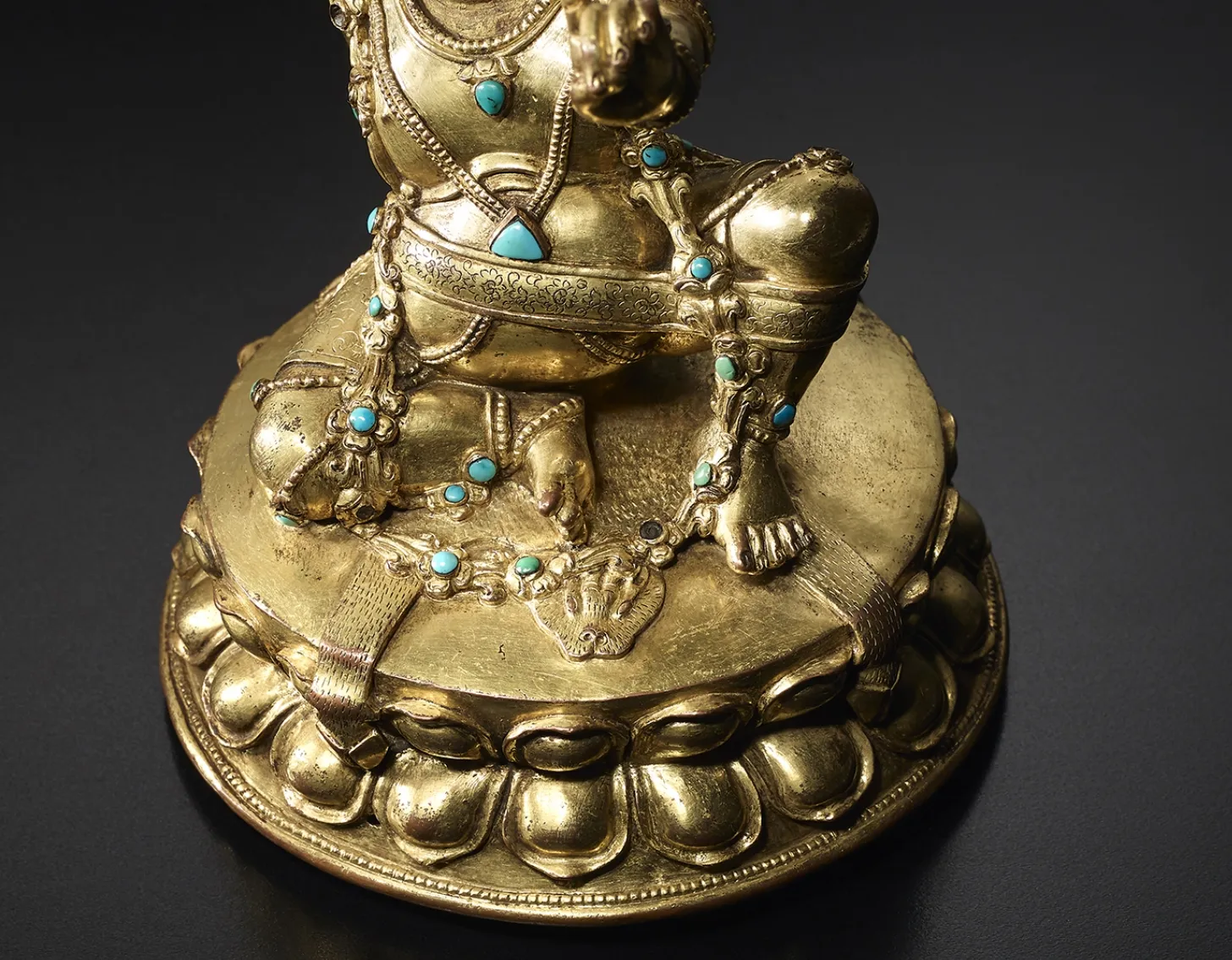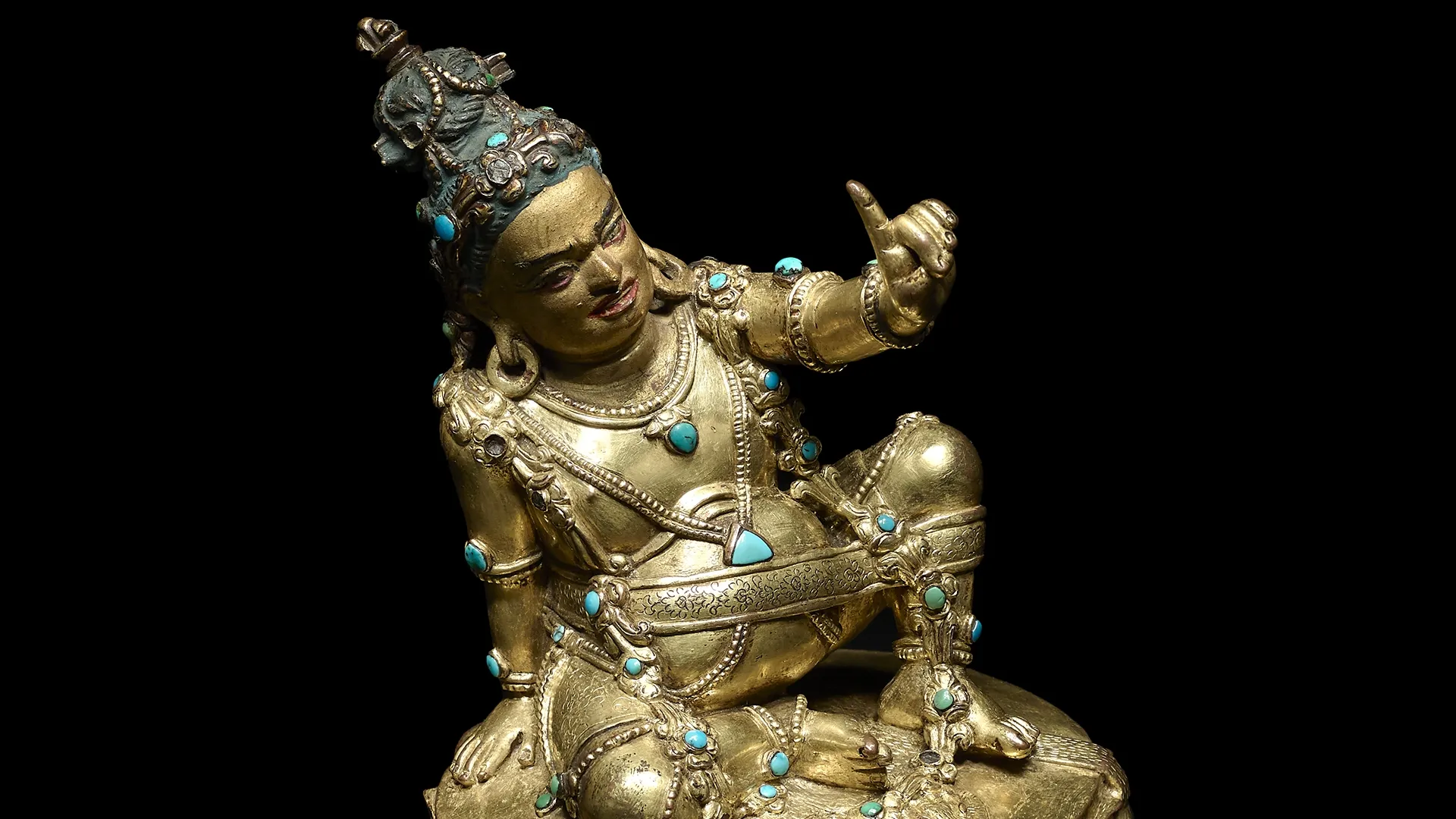The earliest Tibetan sculpture surveyed in this collection pays homage to one of the great luminaries of Indian Buddhism, the c. 9th century Buddhist master Virupa (cat. no. 13). Like other mahasiddhas (Great Adepts) of the medieval period, Virupa spent years in formal Buddhist training before withdrawing from monastic life to follow his own path. He is credited with a powerful meditative practice known as Lamdre (“The Path and its Fruit”), which was introduced to Tibet by the Indian teacher Gayadhara (d. 1103) and became an important teaching particularly within the Sakya school. Famed both for his exceptional wisdom and his wild ways, the iconography of this image is rooted in a famous episode from Virupa’s life when, pointing his finger at the sun, he stopped its rotation in order to avoid paying his bar tab.


In this 15th-16th century work, the saint holds his left index finger to the sun while supporting himself with the left hand pressed behind him on a lotus seat covered with an antelope skin. A Buddhist manuscript is folded into his chignon, and a flower garland falls around the shoulders, down the torso, and to his feet. A meditation strap—recalling his many hours in meditation—encircles his wide girth and the left shin. The figure is richly gilded and inset with turquoise stones. The face is painted gold and the lips, eyes, and eyebrows are likewise painted in the Tibetan manner, imparting a life-like appearance. A baseplate, secured by a rim beneath the seat, bears a double thunderbolt (visvavajra) design similar to that on a c. 15th century Milarepa sculpture in the Nyingjei Lam collection (cat. no. 13.1).

